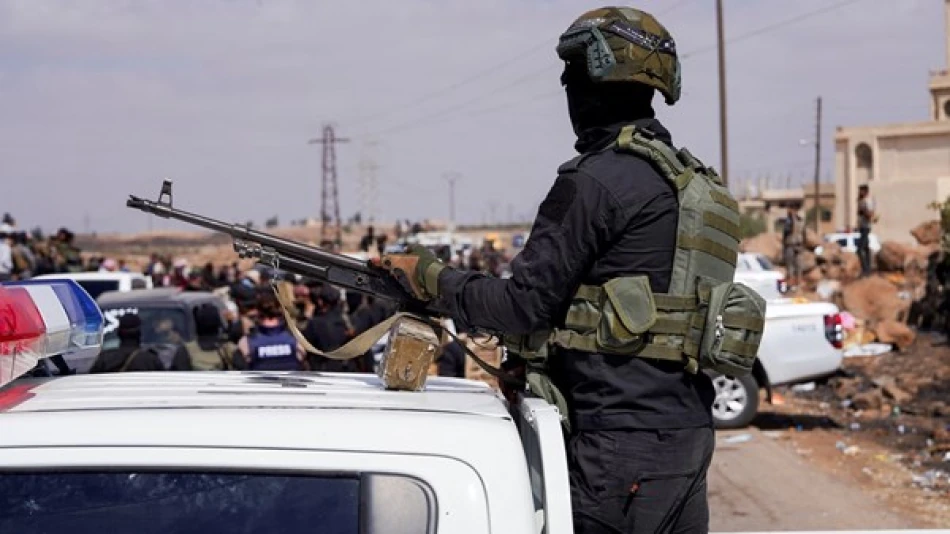
Ceasefire Holds Firm in Sweida, Showcasing Resilience Amidst Conflict
Syria's Ceasefire Holds in Sweida as Assad's Successor Faces First Major Test
A fragile ceasefire in southern Syria's Sweida province enters its second day, marking an early challenge for President Ahmed al-Sharaa's administration as it attempts to consolidate control following the fall of Bashar al-Assad's regime. The truce, which took effect Sunday after tribal fighters withdrew from Sweida city, has so far contained violence that claimed over 1,100 lives in a single week of fighting between tribal militias and local armed groups.
New Leadership Under Pressure
President al-Sharaa's Saturday pledge to protect all Syrians and hold accountable "violators from any side" represents his first major test in managing Syria's complex web of local grievances and armed factions. The swift implementation of the ceasefire suggests the new government retains enough authority to broker deals between warring parties, a critical capability for any administration seeking to govern Syria's fractured landscape.
The Sweida violence, which erupted on July 13, underscores the challenges facing Syria's transitional government as it attempts to establish legitimacy beyond Damascus and major urban centers. Unlike the sectarian conflicts that dominated Syria's civil war, this outbreak involved intra-community fighting among Druze-majority areas, highlighting how local disputes can quickly escalate without effective central authority.
Humanitarian Crisis and Response
The death toll of 1,100 casualties in just one week, according to the Syrian Observatory for Human Rights, demonstrates the intensity of fighting that gripped the province. Syrian Red Crescent convoys entered the area Sunday carrying humanitarian aid, suggesting some restoration of government services and access to previously contested areas.
Strategic Implications for Syria's Future
Sweida province's location along Syria's southern border with Jordan makes stability there crucial for regional security and potential reconstruction efforts. The province has historically maintained a degree of autonomy, with Druze communities often negotiating directly with Damascus rather than submitting to full central control.
The new government's ability to broker this ceasefire without apparent military intervention suggests a more negotiated approach to governance than Assad's regime typically employed. This could signal a shift toward accommodating local autonomy arrangements, though it remains unclear whether such flexibility extends to other restive regions.
Testing Ground for Post-Assad Syria
The Sweida crisis serves as an early indicator of how Syria's new leadership will handle the country's numerous fault lines. Success in maintaining this ceasefire could provide a template for managing other potential conflicts, while failure might embolden other regions to challenge central authority.
The rapid escalation and high casualty count also highlight the fragility of Syria's security situation despite the regime change. Local grievances, competition over resources, and the proliferation of weapons from years of conflict create conditions where disputes can quickly turn deadly without effective mediation mechanisms.
Most Viewed News

 Layla Al Mansoori
Layla Al Mansoori






